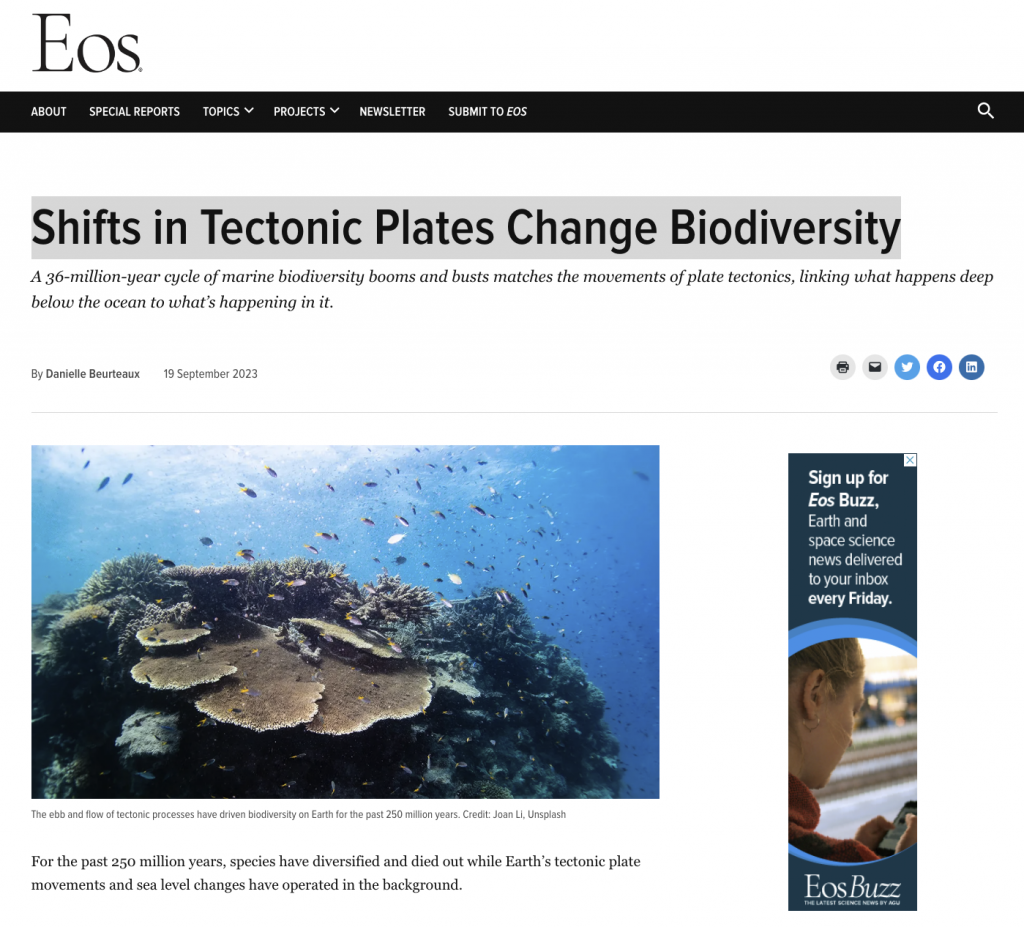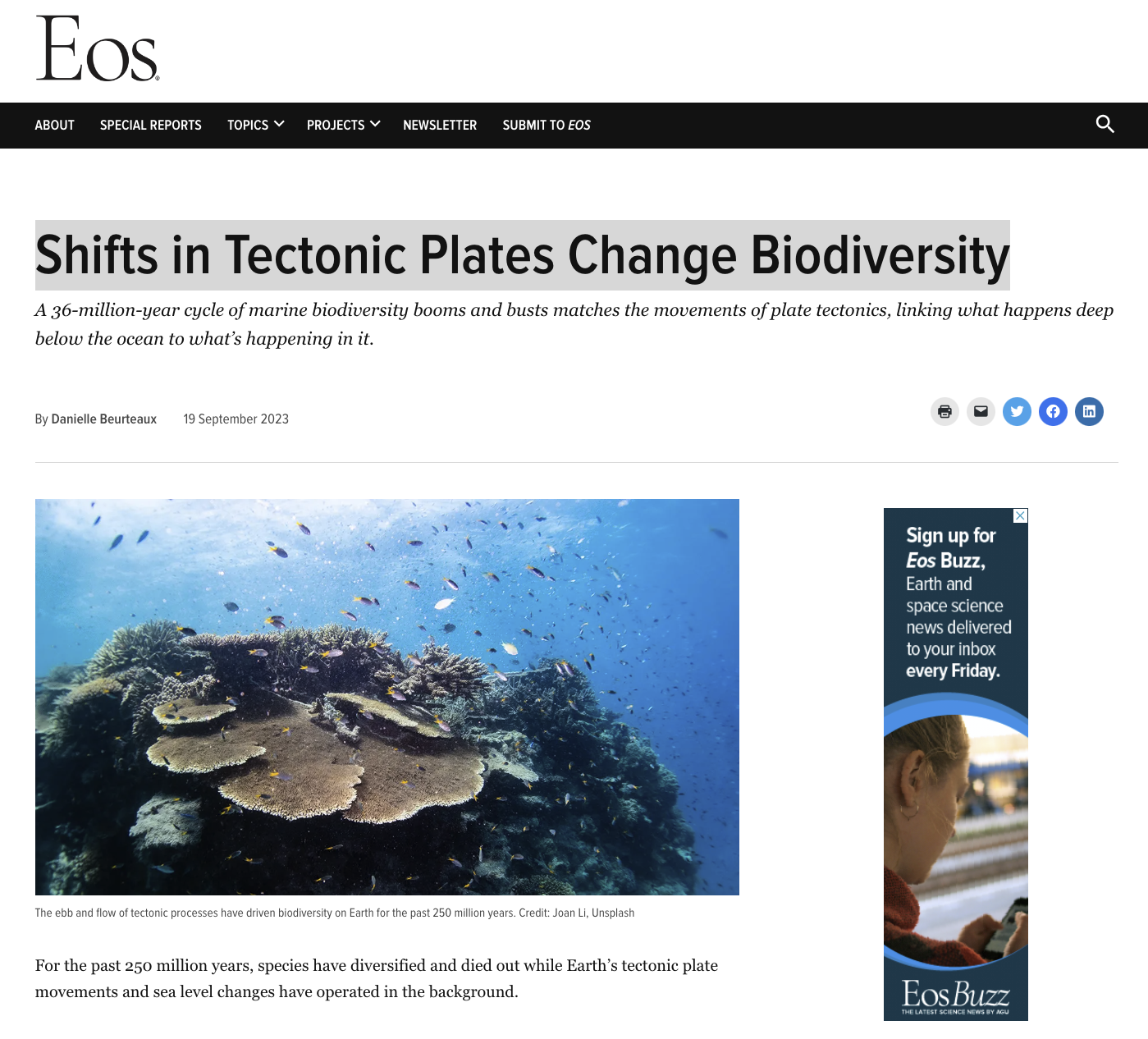
For the past 250 million years, species have diversified and died out while Earth’s tectonic plate movements and sea level changes have operated in the background.
They’re linked, according to new research that found that processes altering the lithosphere affect ocean levels and, in turn, the availability of shallow marine environments in which life thrives.
“Why we have cycles in diversity and biodiversity is the major question for paleobiologists,” said the study’s lead researcher, Slah Boulila, a geologist at Sorbonne University.
Tectonic plates are large, fragmented sections of Earth’s upper mantle and crust that cover the entire globe. Plates, sitting on a layer of partially melted rock, are in constant motion as processes slowly push and pull beneath the surface. Plate tectonics—the movement of those plates—causes much of Earth’s volcanism, builds mountains, and forms ocean trenches and other, often dramatic, geological features. These processes ebb and flow through time.
Scientists have noted that the diversity of marine species through time has a cyclicity, too.
Seafloor Seesaw
Boulila and his colleagues used geological, marine, and marine biodiversity data sets to see whether these cycles aligned. They looked at more than 18,000 marine rock samples and almost 32,000 genera, most from the Paleobiology Database, an open-source database of paleontological data. They also made use of the most recent tectonic data, using the University of Sydney’s GPlates plate tectonic software.
Comparing the data sets, the researchers found 36-million-year cycles in marine biodiversity that tracked with changing rates in seafloor production and subduction. Where tectonic plates move apart, thin oceanic crust forms. The edges of some oceanic plates are pushed under others in a process called subduction. Water percolating in the cracks of the subducting plate gets pulled into the mantle and is later recycled back out at a mid-ocean ridge, though with a delay. When these processes are happening quickly, more water is removed, and sea level is low.
Variations in sea level, which accompany these changes in the locations of continents and ocean basins, shift the available habitat for marine species. When sea levels are high, water inundates platforms that were once dry land and deepens shallow marine areas. A proliferation of marine organisms follows. Conversely, when sea level is very low, there’s less room for marine life, Boulila explained.
Bruce Lieberman, a paleontologist and evolutionary biologist at the University of Kansas, pointed out that this isn’t the first study to show this cycle or argue there’s a common cause. But, he said, it adds to the growing body of literature that provides solid evidence in the fossil record. “I think that’s important, because it shows the critical connection between changes in the environment and evolution and extinction,” he said. “And there might be environmental factors that operate periodically and that make it all the more fascinating.”
Though the idea of a connection between tectonic plate shifts and biodiversity isn’t new, Boulila said, this research validates it, in part because there are more data available now than 30 years ago when it was first postulated. “It’s very interesting that with our data set we can support and confirm an outstanding hypothesis,” said Boulila.
Not all researchers are convinced that plate tectonics is cyclical, Boulila said, and instead insist it is simply irregular. But this research shows that cyclicity is indeed present—the unanswered question is why.
“For me, the most interesting thing is finding cyclicity in tectonics,” Boulila said.
Lieberman said he doubts this study definitively resolves whether biodiversity spikes are innate to the planet or are due to external forces such as solar system activities. “I think the study is unlikely to settle the debate on whether these cycles in biodiversity are real or not,” he said.
—Danielle Beurteaux, Science Writer
Citation: Beurteaux, D. (2023), Shifts in tectonic plates change biodiversity, Eos, 104, https://doi.org/10.1029/2023EO230354. Published on 19 September 2023.
![]()

